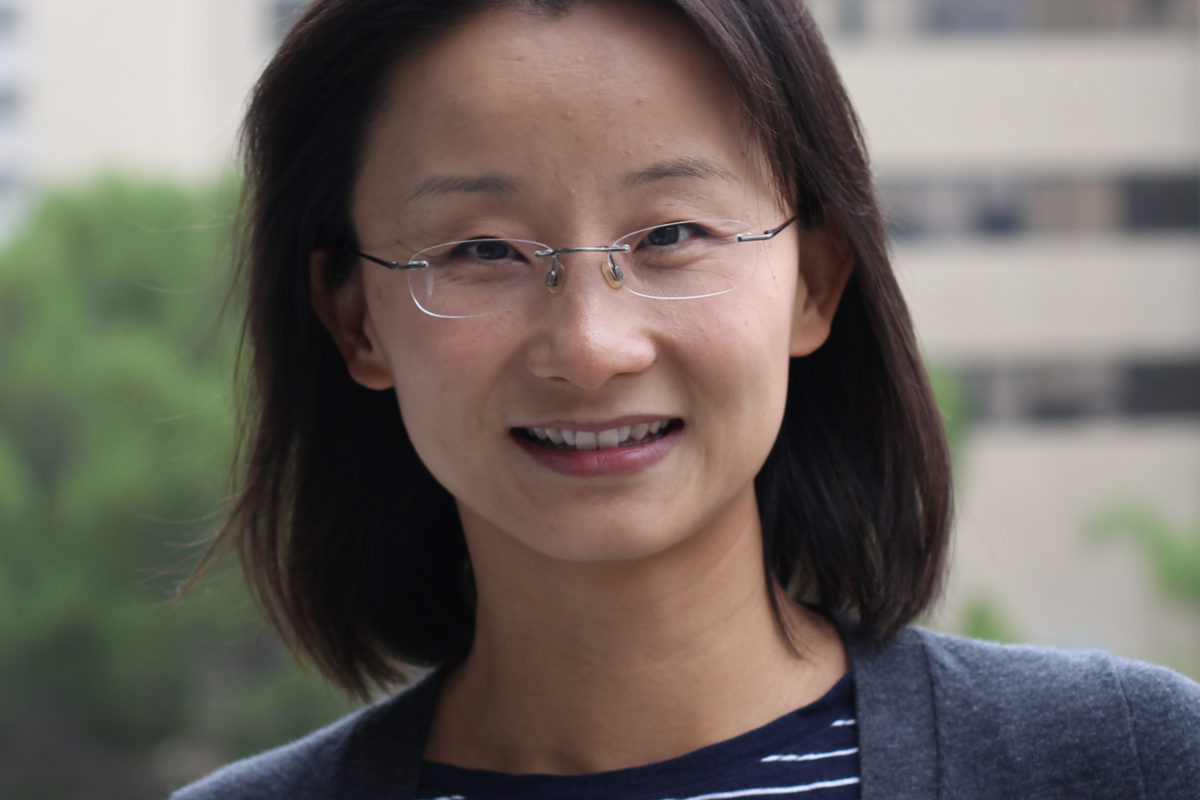
Rong Lu is an associate professor of stem cell biology and regenerative medicine, biomedical engineering, medicine, and gerontology at USC. She joins George Shannon, faculty member and host of the podcast “Lessons in Lifespan Health” at the USC Davis School of Gerontology, to discuss her research into the complex and surprising behavior of individual blood stem cells and what it could mean for treating diseases associated with aging.
Quotes from this episode
On stem cells and what makes them so promising for medical research
Stem cells are the special cells in the body that can produce other type of cells. So in particular there are two type of stem cells, one called embryonic stem cells that only exist in the embryonic stages. And the other type of stem cells are called somatic stem cells that are also exist in adulthood. And these somatic stem cells can produce only a specific subset of the cell types in the body. For example, skin stem cells can only produce skin cells and blood stem cells can only produce blood and immune cells. But all the stem cells share the general special property called self-renewal and differentiation. So differentiation describes their ability to produce a different type of cells and self-renewal refers to their ability of making more of themselves over time and sustain the long-term differentiation and tissue regeneration.
On the ability of stem cells to regenerate as we age
…that’s what makes stem cells super special because they are the only long-lasting cells in the body that continuously regenerate and sustain the tissue. But over time, stem cells capacity in terms of self-renewal are reducing and therefore the tissue as homeostasis decline when the body ages.
On whether stem cells might offer protection against age-related immune decline
Sure. So over aging stem cells become less and less competent in producing immune cells. And, the hope is if we can maintain the stem cells capacity over time then we could make the stem cells offer the protection. Again, this is very much a research in progress and many research labs are working on this important question, including my own lab.
On the focus of research in her lab
In our lab, we’re interested in understanding how are individual stem cells different from each other and how different stem cells work together to maintain an overall balanced blood pool. And in particular, over aging, we want to understand how individual blood stem cells change during aging and how their change lead to the aging phenotype of the animal. And what we found is that there are a specific subset of blood stem cells that age, particularly faster than the others. And there’s also another group of stem cells that actually can change in the opposite way during aging and provide more immune cells and their presence really correlate with the delayed aging phenotype of the animal. So we’re very excited about this finding and we’re following up on this study using our bar coding tool to track these anti-aging stem cells and study what make them so special.
On the development and use of a tool to label individual cells with unique “barcodes”
The barcoding tool was developed a couple of decades ago by several labs simultaneously. At that time they used the viral insertion site as a marker to track individual cells.
So about 10 to 20 years ago, high throughput sequencing technology started to emerge. And at that time, I started to combine the new capacity of this high throughput sequencing to quantify the cellular behavior at a single cell level. So instead of using viral insertion site, I provide a particular DNA barcode sequence into the virus and use that as a marker to track individual cells. And what this allow us is a high precise quantification of the cellular behavior and also the high throughput that is needed to track hundreds and thousands of stem cells in the body.
We can use this tool to study cancer cells and understand the heterogeneity among individual cancer cells. For example, a recent study from my group used it to track the primary acute lymphoblastic leukemia cells in xenograph mouse model. And what we found is that individual leukemia cells have different ability to grow to metastasize and to respond to the drug treatment. And we found that some cancer stem cells that are particularly resistant to drugs to drug treatment In particular, some leukemia cells that are particular resistant to chemotherapy treatment, exhibit distinct gene expression signature compared to others.
On gene expression signatures
The gene expression signature means these particular subset of cells express a distinct subset of genes that make them different and potentially may cause their specific drug response behavior. So these particular gene expression signature can allow us first to identify these cells and to detect whether these cells exists and whether the patient has the potential of resist chemotherapy. And secondly, these gene expression signature can also be potential drug treatment targets to allow us to particularly target these cancer or leukemia cells in the therapeutic treatment.
On future directions in aging research
So in the context of aging, we are very excited about our recent discovery of these anti-aging, uh, stem cells. And we would like to further understand how to activate these anti-aging behavior and how to expand their function in the animal. And we are also very excited about our discovery on the cellular heterogeneity in disease, in particular, in their response to chemo drug treatment. And we would like to further identify the potential functions of the gene expression signature that we discovered. In addition, we also want to understand whether the microenvironment of the stem cell play a role in terms of instructing their heterogeneous behavior.
